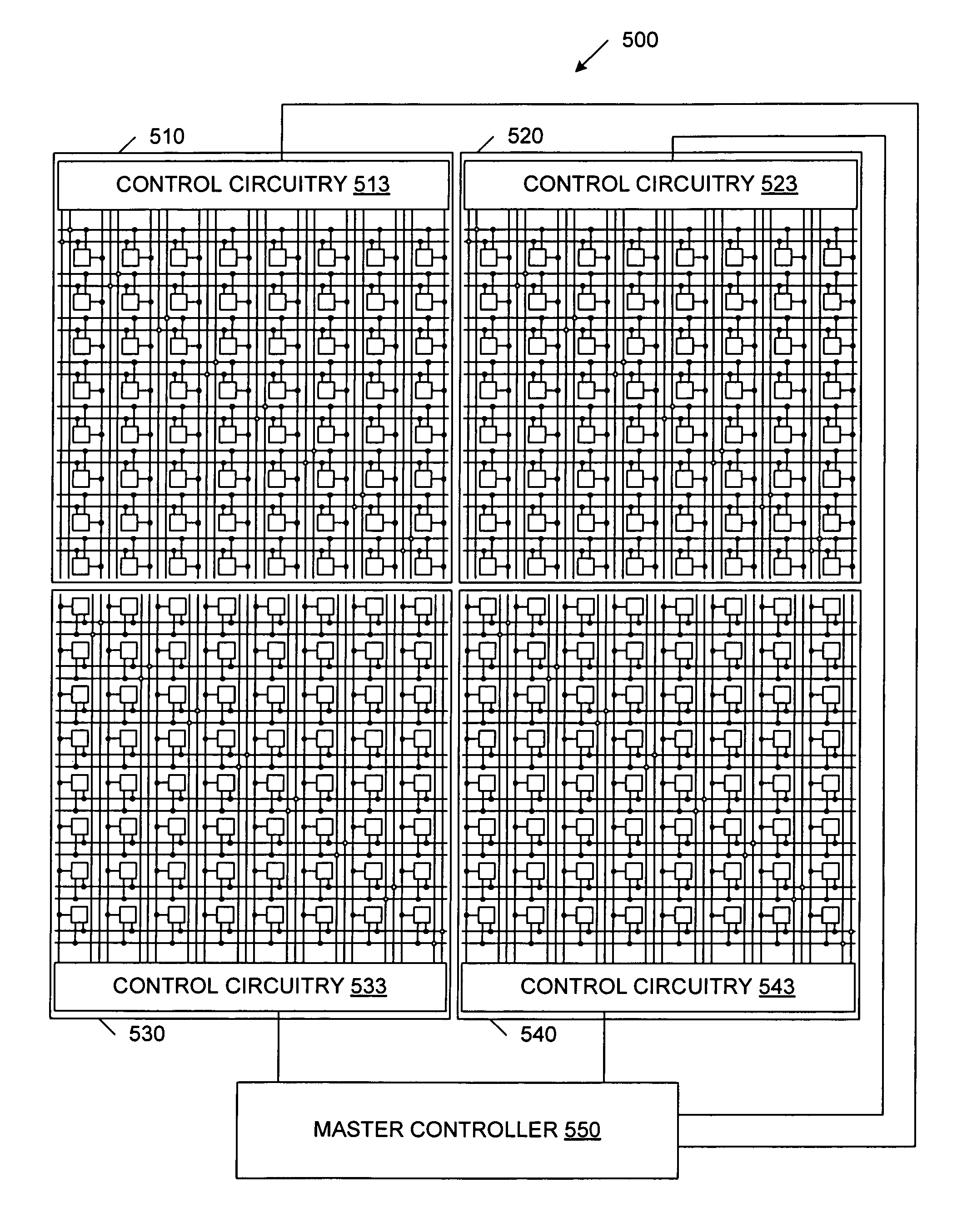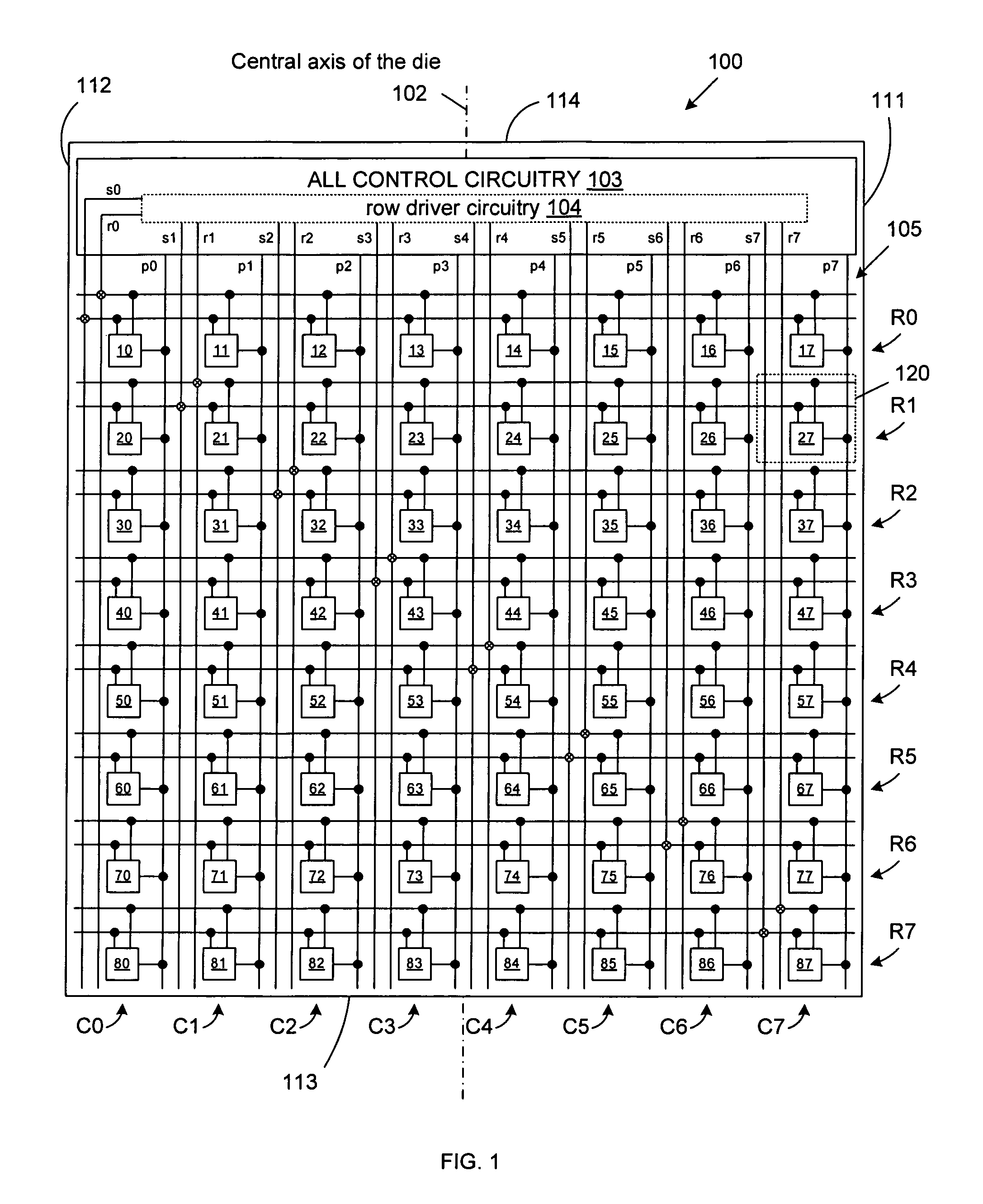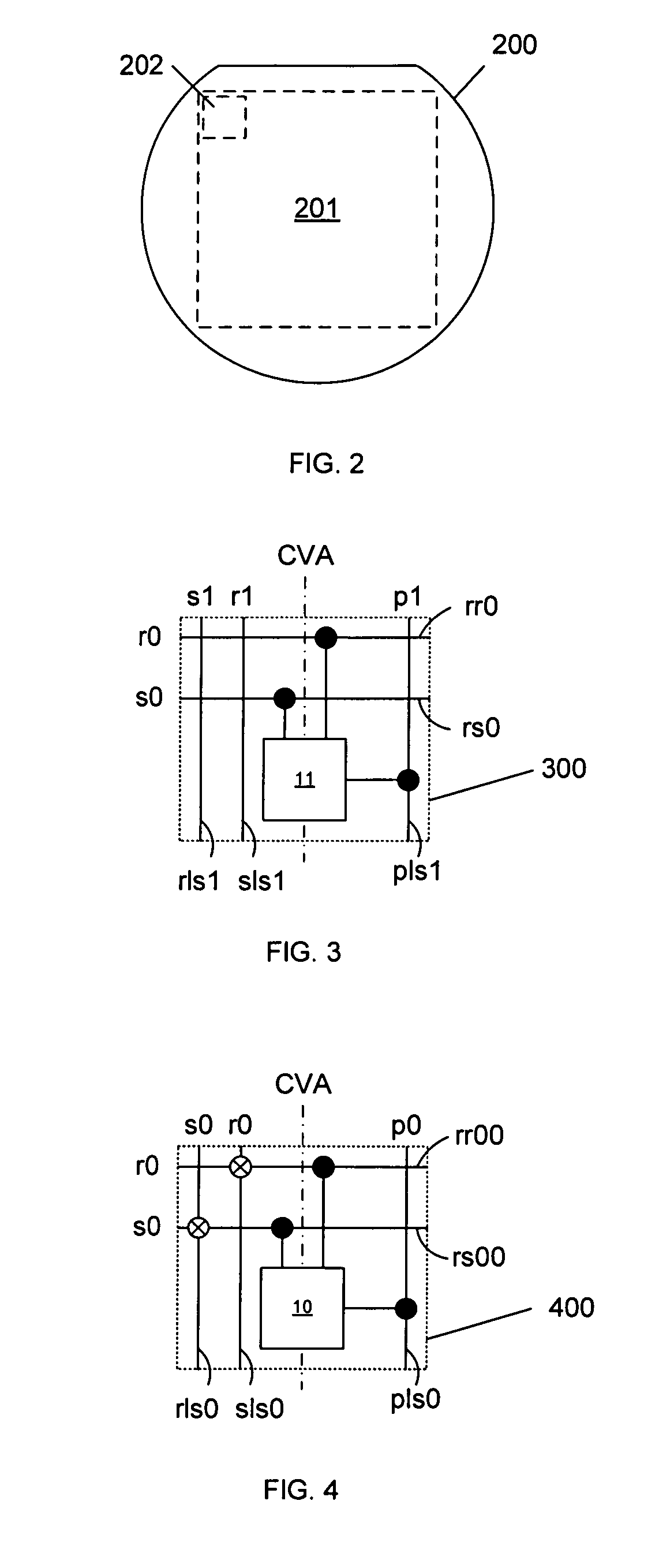Horizontal row drivers for CMOS image sensor with tiling on three edges
a technology of cmos image sensor and horizontal row driver, which is applied in the field of large cmos image sensor, can solve the problems of reducing the fill factor of the resulting image sensor, and achieve the effect of improving the fill factor and improving the pixel sensitivity
- Summary
- Abstract
- Description
- Claims
- Application Information
AI Technical Summary
Benefits of technology
Problems solved by technology
Method used
Image
Examples
Embodiment Construction
[0014]FIG. 1 is a block diagram of a CMOS image sensor die 100 in accordance with one embodiment of the present invention.
[0015]As used, herein, the term ‘die’ refers to a continuous substrate on which a pixel array and the associated control circuitry is fabricated. A die can have various shapes and sizes, and is not necessarily limited by the exposure area of a reticle used in the corresponding photolithographic process. That is, a die can be made larger than the reticle exposure area of a photolithographic process by implementing a conventional stitching process. This relationship is illustrated in FIG. 2.
[0016]FIG. 2 is a schematic view of a conventional semiconductor wafer 200, wherein region 202 represents the maximum exposure area of a reticle used in a photolithographic system used to process wafer 200. Typically, one or more entire dies may be fabricated within region 202. However, multiple reticle exposure areas can be ‘stitched’ together to create larger die sizes. For ex...
PUM
 Login to View More
Login to View More Abstract
Description
Claims
Application Information
 Login to View More
Login to View More - R&D
- Intellectual Property
- Life Sciences
- Materials
- Tech Scout
- Unparalleled Data Quality
- Higher Quality Content
- 60% Fewer Hallucinations
Browse by: Latest US Patents, China's latest patents, Technical Efficacy Thesaurus, Application Domain, Technology Topic, Popular Technical Reports.
© 2025 PatSnap. All rights reserved.Legal|Privacy policy|Modern Slavery Act Transparency Statement|Sitemap|About US| Contact US: help@patsnap.com



